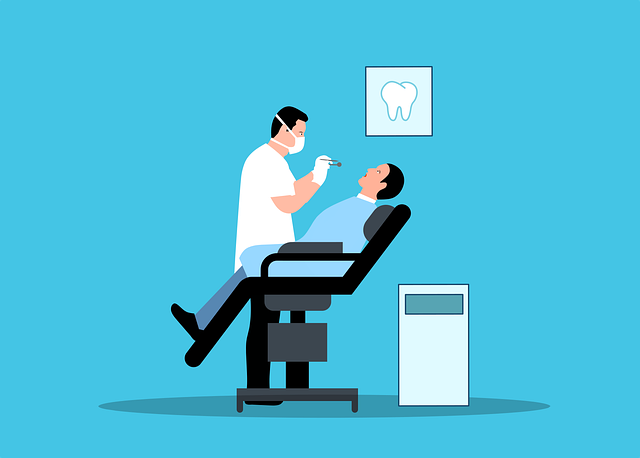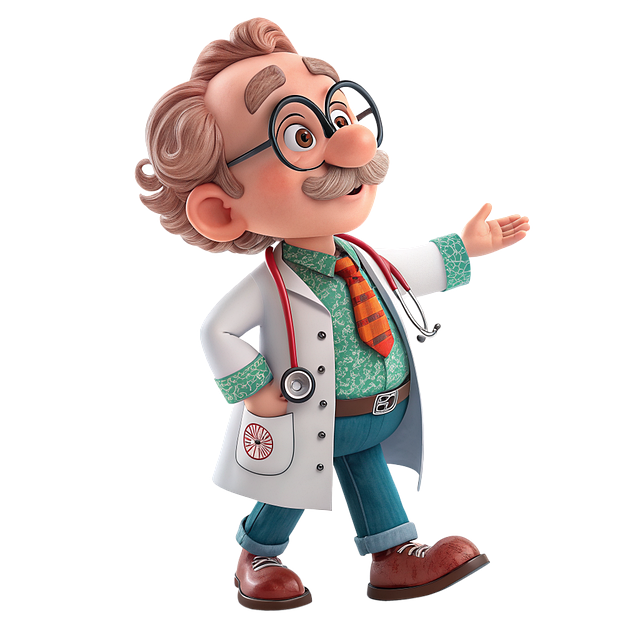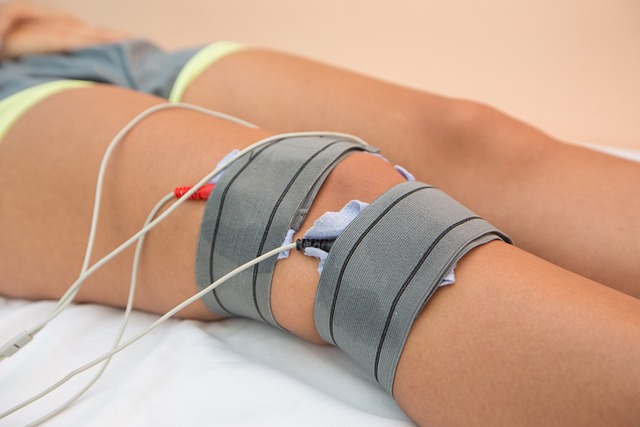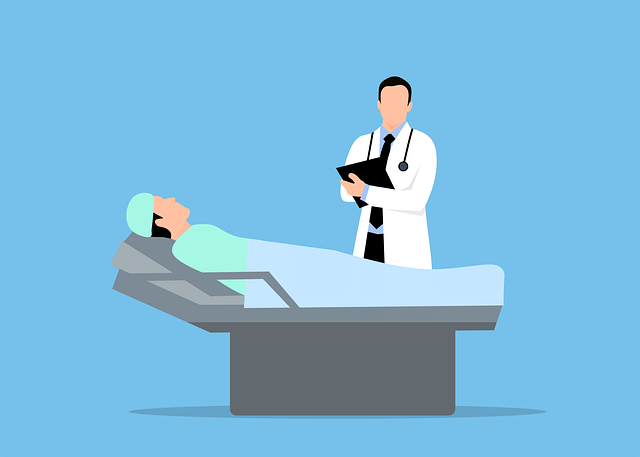Diagnostic tools in regenerative medicine have evolved dramatically, from basic imaging (MRI, CT) to advanced molecular techniques tracking cellular and biomolecular activity. Single-cell sequencing and AI now offer unprecedented detail into complex systems, enabling personalized treatment approaches based on individual patients' genetic and molecular profiles. Integrating multi-modal diagnostic methods promises real-time monitoring of regenerative therapies, enhancing outcomes and revolutionizing the field through precise stem cell and growth factor applications.
In the rapidly evolving landscape of regenerative medicine, advanced diagnostic tools are revolutionizing patient care. This article delves into the latest innovations that enable precise and personalized treatment approaches. We explore the evolution of diagnostic techniques, from conventional methods to cutting-edge imaging and molecular diagnostics. By integrating artificial intelligence, healthcare professionals enhance decision-making, ensuring optimal outcomes. Furthermore, we discuss future prospects, emphasizing multi-modal diagnostic strategies for a comprehensive understanding of regenerative medicine’s potential.
- Evolution of Diagnostic Tools in Regenerative Medicine
- Advanced Imaging Techniques for Regenerative Therapies
- Molecular Diagnostics: Unlocking Personalized Treatment
- The Role of Artificial Intelligence in Precision Diagnosis
- Future Prospects: Integrating Multi-Modal Diagnostic Approaches
Evolution of Diagnostic Tools in Regenerative Medicine

The evolution of diagnostic tools has been a game-changer in regenerative medicine, enabling more precise and effective treatments. Early days saw basic imaging techniques like MRI and CT scans provide valuable insights into tissue structure and damage. However, as regenerative medicine aims to restore and regenerate tissues, simply visualizing structural abnormalities is not enough. Advanced diagnostic tools have since emerged to assess the biological and cellular levels, such as molecular imaging, which can track specific cells or biomarkers involved in the healing process. This shift allows doctors to make more informed decisions about patient eligibility, treatment planning, and monitoring response to therapy.
Additionally, emerging technologies like single-cell sequencing and bioinformatics are offering unprecedented detail into complex biological systems, uncovering subtle changes that might be missed by traditional methods. These diagnostic tools not only enhance the understanding of disease mechanisms but also facilitate personalized medicine approaches, tailoring treatments to individual patients’ needs in regenerative medicine.
Advanced Imaging Techniques for Regenerative Therapies

Advanced imaging techniques play a pivotal role in the field of regenerative medicine, offering researchers and clinicians unparalleled insights into tissue structure and function. These cutting-edge tools have revolutionized diagnostic capabilities, enabling precise evaluation of regenerative therapies. By providing high-resolution images that reveal cellular interactions and microenvironment dynamics, advanced imaging becomes an indispensable resource for optimizing regenerative strategies.
One such technique, magnetic resonance imaging (MRI), offers detailed anatomical information, while functional MRI (fMRI) tracks blood flow changes, indicating areas of active tissue regeneration. Additionally, molecular imaging techniques, like positron emission tomography (PET), allow for the non-invasive detection of specific biomolecules involved in regenerative processes, enhancing our understanding of how cells interact during healing. These advanced diagnostic tools empower medical professionals to make data-driven decisions, ultimately refining regenerative medicine approaches and improving patient outcomes.
Molecular Diagnostics: Unlocking Personalized Treatment

Molecular diagnostics play a pivotal role in the realm of regenerative medicine by offering personalized treatment approaches. These advanced diagnostic tools enable healthcare professionals to analyze an individual’s genetic makeup and molecular profiles, providing insights into their unique response to regenerative therapies. By understanding the complex interplay between genes, proteins, and cellular signaling pathways, physicians can tailor treatments to specific patient needs.
This precision medicine approach ensures that regenerative treatments are not one-size-fits-all but rather customized to address the underlying causes of diseases. Advanced molecular diagnostics facilitate the selection of optimal cell types, growth factors, and supportive therapies, enhancing treatment outcomes and potentially revolutionizing the field of regenerative medicine.
The Role of Artificial Intelligence in Precision Diagnosis

Artificial Intelligence (AI) is transforming the landscape of regenerative medicine by enhancing precision diagnosis. With its ability to analyze vast amounts of complex data, AI can identify subtle patterns and correlations that may be difficult for human experts to discern. This technology plays a crucial role in diagnostic tools for regenerative medicine, enabling more accurate and personalized treatment plans. By learning from large datasets, including medical images, genetic information, and patient outcomes, AI algorithms can predict disease progression and respond to patient-specific needs.
In the realm of regenerative medicine, AI facilitates the development of advanced diagnostic protocols. It helps in identifying the optimal cells, growth factors, and scaffolds for tissue regeneration by analyzing historical data and real-time patient parameters. This precision approach ensures that treatments are tailored to individual patients’ unique requirements, enhancing potential outcomes and minimizing risks. Moreover, AI can continuously learn from new data, improving diagnostic accuracy over time.
Future Prospects: Integrating Multi-Modal Diagnostic Approaches

The future of regenerative medicine holds immense promise, and integrating multi-modal diagnostic approaches is a promising step forward. By combining various imaging techniques, such as magnetic resonance imaging (MRI), computed tomography (CT), and ultrasonography, healthcare professionals can gain a more comprehensive understanding of tissue structure and function. This holistic view enables precise identification of repairable damage, guiding the application of stem cells and growth factors with enhanced accuracy.
Multi-modal diagnostics allow for real-time monitoring of treatment efficacy, tracking tissue regeneration, and early detection of potential complications. Such advanced techniques can revolutionize personalized regenerative medicine, ensuring that treatments are tailored to individual patient needs. This integration of diagnostic tools promises to streamline clinical decision-making, improve outcomes, and ultimately advance the field of regenerative medicine.
The evolution of diagnostic tools in regenerative medicine is revolutionizing patient care, enabling more precise and personalized treatments. Advanced imaging techniques, molecular diagnostics, and artificial intelligence are reshaping how we approach regenerative therapies, facilitating a deeper understanding of complex biological processes. Integrating multi-modal diagnostic approaches holds immense potential for the future, promising to enhance treatment outcomes and ultimately improve patients’ lives. As these technologies continue to advance, they will be pivotal in navigating the intricate landscape of regenerative medicine.
